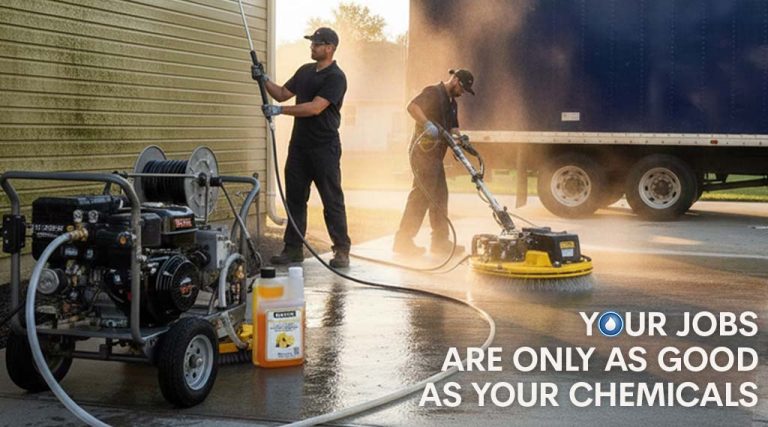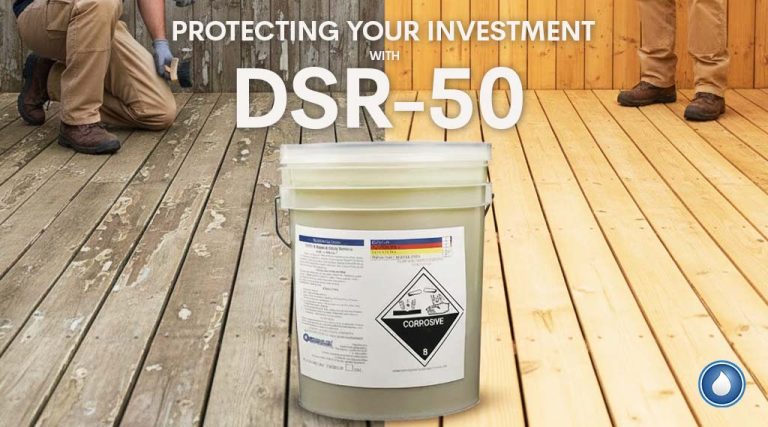- Home
- /
- PowerWash Industry
- /
- Grease Trap & Drainline Treatment
Subscribe To Our Newsletter
Stay in the know on the latest products, deals, events, tips & tricks.
Social Media
Grease Trap & Drainline Treatment
Treatment of Wastewater Systems
BACKGROUND:
The CLEAN WATER ACT (as amended) has directed much of the food service industry to new levels of awareness and maintenance practices. The control of fats, oil and grease (FOG) in wastewater has mandated changes in maintenance procedures. Virtually every kitchen has an improved level of waste handling in the past few years as new technology has evolved and varied approaches to maintenance have been implemented. Some have been modestly successful and some have not.
One particular technology, gaining rapid acceptance, has been the biological/chemical treatment of wastewater systems including grease traps and grease interceptors (traps). With this practice, in its current methodology, selective bacteria attracted to FOG are injected into wastewater flows at critical locations. As the waste flows transport and deposit the formulation within the wastewater systems, the bacteria and their derived enzymes establish a bio-mass around FOG accumulations. The enzymes and bacterial action then begins to degrade the hydrocarbon’s molecular structure. Adverse to this simplified process is the elements of chlorines, iodine’s and sanitizers, which inhibit the process.
SC-5 Food Products has been actively working in this market and has tested several products by various manufacturing laboratories for over ten years. Our company has both proprietary and factory-direct formulations in use at this time. From experience we have learned to identify situations in which one or another formulation may have better results. Under the TDW- TRAPS, DRAINLINES & WASTEWATER
TREATMENT program we have established different methods for treating a variety of problems related to grease traps.
Following is a brief description of the process by which SC-5 and its representatives will evaluate a prospective site.
SITE EVALUATION:
Grease traps and/or grease interceptors (traps) generally perform the same function in wastewater systems. Depending on the method and quantity of grease coming into the system, there are limited ways by which it can be removed. Historically the trap was manually cleaned. At times chemicals have been used to ‘disperse’ the grease. Pumping has been used as well. More recently it has been asserted that bio-enzyme treatments can eliminate grease by breaking down the hydrocarbon molecules.
Today, manual cleaning is still effective; however, the disposal of the waste has become an issue. The ‘dispersing’ approach is entirely unacceptable within the scope of the EPA CLEAN WATER ACT.
Pumping and dumping is expensive. Bio- enzyme treatment, while theoretically workable, is limited
Due to the conflicting requirements of the health & safety practices using sanitizers and ‘bleach’.
In practice, then, SC-5 suggests the adoption of both a treatment process and a regimen of physical inspection to insure the integrity and performance of the trap and wastewater system.
The process recommended by SC-5 involves the following steps;
-
- 1. An on-site inspection of the trap.
-
- 2. An on-site tabulation of the conflicting chemicals
-
- 3. An estimation of daily grease accumulation and volume of conflicting chemicals accumulating in the trap, and
-
- 4. A ‘guesstimate’ as to both quantity and frequency of treatment with our bio-enzyme formulation
As well as a declining frequency of physical inspections (to some optimal level) so as to control cost to the customer.
-
- 5. Finally, a through trial and error, some optimal level of formula treatment must be derived as a function of improved kitchen practices.
Logically, it is desirable to put a preventative maintenance program in place which eliminates the
Emergency call for drain line maintenance while insuring compliance with current legislation. In many cases this program is no more expensive than the cost of business interruption and the ‘emergency drain cleaner services’.
COSTS:
In most normal traps the treatment of the wastewater system involves the one-time purchase and installation of an automatic dispensing pump at a cost of approximately $300. Per location. Add to this the product cost on a monthly basis (which is calculated when doing the site evaluation). Pumps can be battery operated or AC electrical and normally last for long periods of time. Pumps may be manually operated or programmable. Finally, estimate the cost of physical service inspections by either a staff employee or by a trained service provider.
Allowing for improvement over time (recovery) and improved kitchen practices, the maintenance costs on an ongoing basis can be reduced to some extent. In most cases odors and drain function will be noticeably improved within weeks.
BENEFITS:
When drain systems and traps have become a problem, the costs for sporadic emergency services are unavoidable and expensive. The “control” factor is non-existent and delays in getting service response are frustrating and costly. With a preventative maintenance program none of the above difficulties should occur. Costs and control are offset, in some cases fully, by the elimination of ‘emergency service calls’.
It is to be noted that ‘emergency service’ is generally of a Band-Aid nature. It does not address the problem itself, but is intended only to put the operations back on line. The maintenance/treatment program addresses the cause of the problem directly.
Share This Post
More To Explore
Winter Pressure Washing Maintenance Checklist
Winter Pressure Washing Maintenance Checklist Prepared for Contractors by PowerWash.com. Winter is the most important time of year to protect ...
2025 Tax Changes, New Rigs & Easy Payments: What Power Washing Pros Need to Know Before Dec 31
Updated for the latest federal guidelines. PowerWash.com does not provide tax advice. Always consult your CPA. As the year comes ...
Your Jobs Are Only as Good as Your Chemicals: Here Are the Ones That Stand Out
If your busy season has you running from job to job, you already know this: the equipment you use matters, ...
Stripping Wood the Smart Way (Not the Hard Way)
Deep Wood Restoration Made Simple with DSR-50 Whether you’re a professional deck and fence restoration contractor or a homeowner prepping ...




